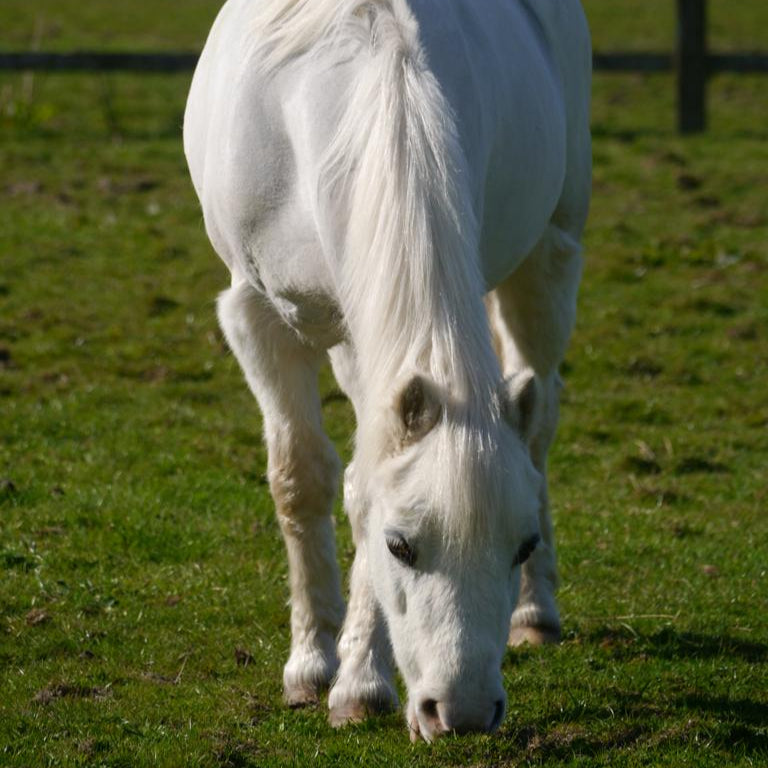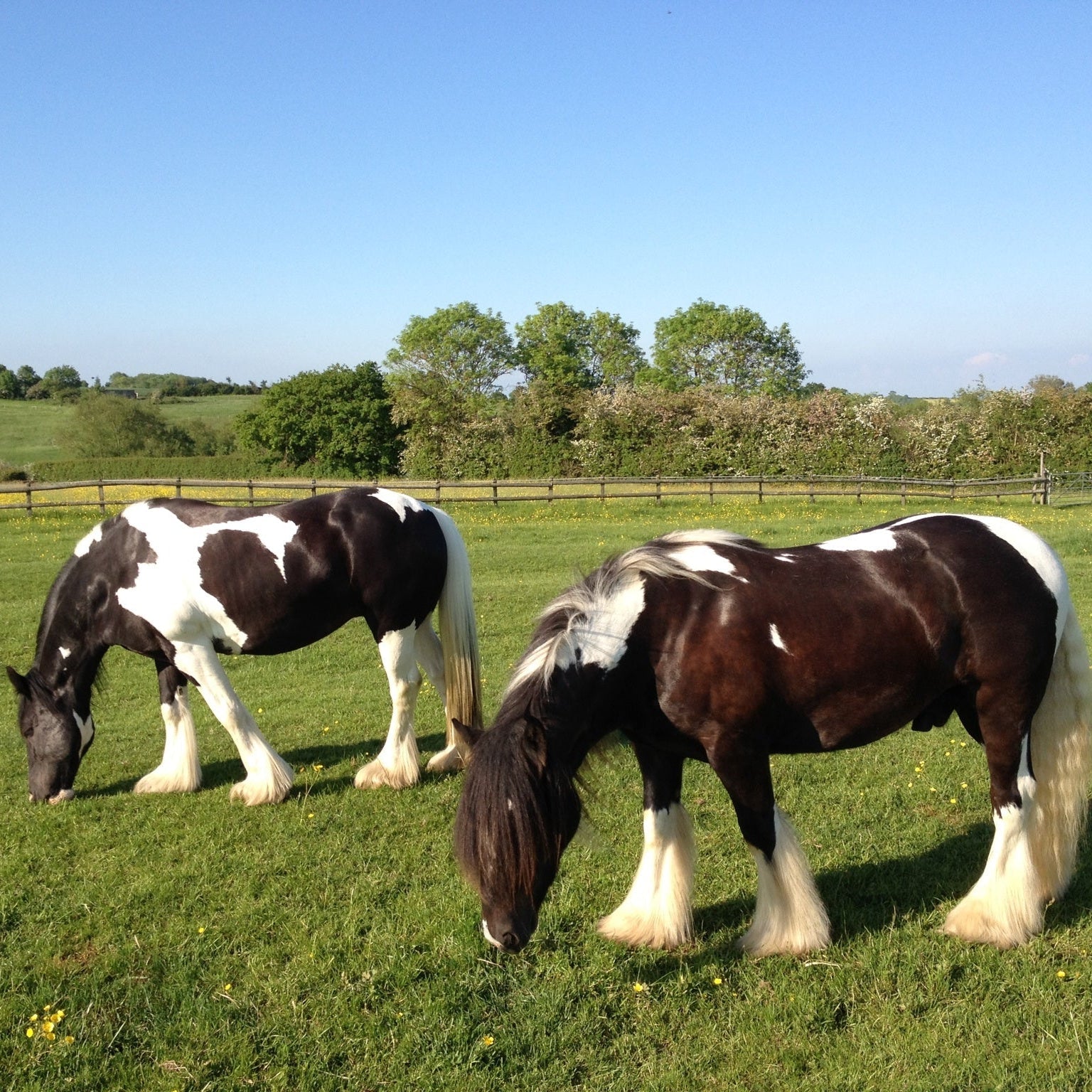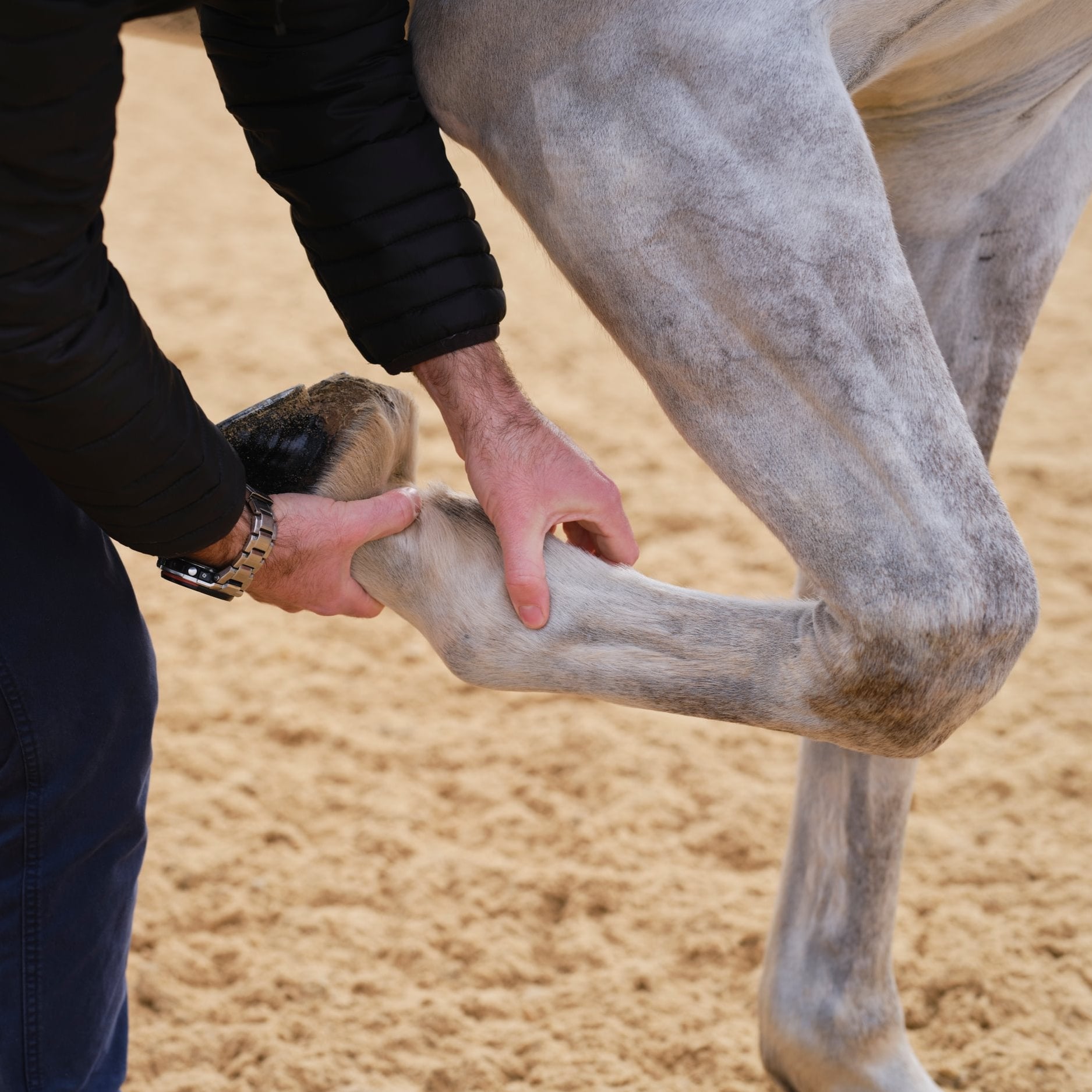What to look for in management of laminitis prone horses and ponies
Laminitis occurs when disrupted blood flow within the foot causes damage to the sensitive laminae – structures responsible for holding the horse’s pedal bone securely within the foot. As laminitis progresses tearing can occur in the laminae, allowing the pedal bone to rotate downwards and even drop through the sole of the hoof.
Damage in the laminae is a very painful condition, and one you should always discuss with your vet. Prevention is, of course, better than cure so knowing a little more about the risks can help you keep your laminitis prone horse or pony sound and healthy all year round.
What causes laminitis?
*Myth Busting!* It is often thought that laminitis is a springtime condition of overweight ponies on fresh grass.
Whilst there are some potential triggers there, research shows laminitis can occur in any horse or pony, and the time of year has little or no influence. There is no ‘safe’ season for those prone to laminitis.
There are a number of different causes of laminitis in horses, which can occur in any horse or pony.
Metabolic
The most common cause, with up to 90% of laminitis cases linked to metabolic conditions such as Equine Cushing’s Syndrome and Equine Metabolic Syndrome (EMS). These conditions can increase levels of insulin in the bloodstream, which in turn can trigger a laminitic episode.
Insulin resistant (IR) and EMS animals are prone to weight gain. Monitor weight regularly using a weigh tape, and feed accordingly. Keep a careful eye on access to grazing – restricting if necessary. See our Blog on Grazing Management for Good Do-ers for further information.
Inflammatory
Feeding too many concentrates in the diet should also be avoided. A high starch diet is unnatural to equids and can result in potentially harmful excessive reactions from the microbiota of the hindgut – designed to break down tough plant fibres rather than rich cereal grains. The end result is a build-up of toxins which enter the blood stream, and thought to ultimately increase sensitivity within the delicate laminae.
Inflammatory cases may also result from other conditions such as colic or retained placenta in broodmares after foaling, but these are less common.
Other
Less common causes of laminitis include an unusual weight bearing. For example, if a horse has injured a leg and is unable to put any weight through it, laminitis can occur in the opposite leg, which is taking the additional weight.
Mechanical issues such as fast work on hard ground, or poor hoof trimming, can also result in a laminitic episode. Whatever the cause you should always consult your vet following any sudden onset, who will be able to advise on treatment and management.
Risk factors for laminitis
Large cohort studies, of over 1000 horses and ponies, monitored by researchers at the Royal Veterinary College (RVC) have identified risk factors for laminitis, with the following key findings.
- Recent weight gain
- A history of laminitis
- Native pony breeds & their crosses
- Lameness or sore after shoeing / trimming
- New access to grazing
- Recent box rest
Further potential risks, including dietary and management regimes, were also recognised but not firmly proven, and will be the focus of ongoing studies.
Research is now also helping vets to potentially predict the risk in animals previously unaffected. Looking at the most common cause, the metabolic trigger and related insulin response, a four year study has shown promise for predicting the risk of laminitis by measuring the animal’s natural insulin response.
Early warning signs
It is important to recognise the early warning signs of a potential laminitic episode, so you can take action the moment something changes. Whilst we may be familiar with the classic laminitic stance, of the horse or pony rocked back on their heels, the early signs are more subtle – so be on your guard. Studies show the following are the most common signs in early stage laminitis.
- 78% had difficulty turning
- 72% have a short, choppy, walk stride
- 70% lame at walk
- 58% had increased hoof temperature
- 51% pounding digital pulses
- 51% reluctant to walk
- 51% shifted weight from foot to foot
Click here for further information on the Royal College research.

Management of the laminitic
For those with a history of laminitis, or at particular risk of the condition, it is a long-term year round commitment to maintaining them as sound and comfortable. However, there are simple steps we can all take as owners, in the management of the prone-to equine.
Diet
Maintaining a healthy weight is one of the most important steps we can all take. Ensure the diet, including access to grazing, is following the golden rule of ‘feed to work level’, and not providing in excess.
Exercise
Keep horses and ponies fit and regularly exercised will have a hugely positive effect on their risks of laminitis. Do ensure the exercise is suitable for them and their fitness level. Talk to your vet if they have recently suffered an attack to plan an appropriate regime.
Targeted nutritional support
Good do-ers are often, necessarily, on a very limited diet so do ensure that it is balanced for essential micronutrients. These micronutrients are not only essential for general health, but also repair and defence within the hoof. Choose a broad-spectrum supplement or concentrated balancer, that can be fed in a concentrated way to balance the diet without increasing calorie intake.
For the at-risk individual consider adding targeted support to maintain a healthy hindgut and stable microbiome, and to support good gut health right along the tract. Contact us if you need further advice on feeding the laminitic.
Selected References
- Karikoski NP, Horn I, McGowan TW, McGowan CM. The prevalence of endocrinopathic laminitis among horses presented for laminitis at a first-opinion/referral equine hospital. Domest Anim Endocrinol. 2011 Oct;41(3):111-7.
- Knowles EJ, Elliott J, Harris PA, Chang YM, Menzies-Gow NJ. Predictors of laminitis development in a cohort of non laminitic ponies. Equine Vet J. 2023 Jan;55(1):12-23.
- Pollard D, Wylie CE, Verheyen KLP, Newton JR. Identification of modifiable factors associated with owner-reported equine laminitis in Britain using a web-based cohort study approach. BMC Vet Res. 2019 Feb 12;15(1):59.
- Pollard D, Wylie CE, Newton JR, Verheyen KLP. Incidence and clinical signs of owner-reported equine laminitis in a cohort of horses and ponies in Great Britain. Equine Vet J. 2019 Sep;51(5):587-594.
- Wylie CE, Collins SN, Verheyen KL, Newton JR. Risk factors for equine laminitis: a case-control study conducted in veterinary-registered horses and ponies in Great Britain between 2009 and 2011. Vet J. 2013 Oct;198(1):57-69.
Written by: Dr Andy Richardson, Veterinary Director. BVSc Cert AVP(ESM) MRCVS.Find out more about Andy and our Team HERE



